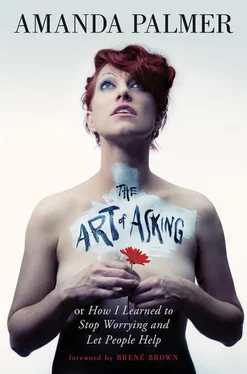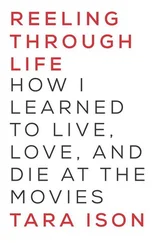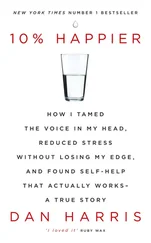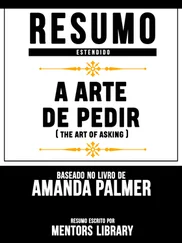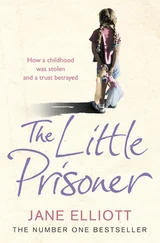But I’venever heard of her… how can people want to give her that much money? What a lucky bitch .
This is why some lesser-known people have had such real success with crowdfunding—they’ve fertilized over time, and diligently—and some better-known people who appear to have massive reach haven’t done well at all. Fame doesn’t buy trust. Only connection does that.
National Public Radio has been following the connect-connect-connect-then-ask model forever: it’s called the annual on-air fundraiser. They create and transmit nonstop, they give away their reporting, storytelling, and content for free all year.
And then when the time comes: they ask.
And, fundamentally, all asking works like this. You must prepare the ground. If you’re going to be asking one day, you need someone to ask who is going to answer the call. So you tend to your relationships on a nonstop basis, you abide by the slow, ongoing task, going out there like a faithful farmer, landing on the unseeable bamboo shoot.
And then, when it is time—whether you’re asking a bunch of people to preorder your album, or asking one person to hold back your hair while you’re puking—someone will be there for you.
• • •
There’s a difference between asking a stranger for a handout, a friend for a favor, or a customer for a down payment on a piece of merchandise. Crowdfunding artists are generally working in the third category, in the spirit of the second.
My Kickstarter had been carefully constructed to allow everyone who wanted to get involved to contribute, no matter how little the amount. The lowest price point was a single dollar, which bought you a simple digital download of the album (which we promised would be out within five months). The CD package cost $25, and the more expensive packages included an art book, a painted portable record player (I spent a whole weekend that summer painting them, with Casey and two artist friends of hers, on my parents’ back porch), fancy double-disc vinyl records ($50), limited-attendance art parties in five cities ($250 a ticket), and house parties ($5,000 each).
By the time we closed, after a monthlong campaign that gathered over a million in backing, the most astonishing thing to me wasn’t the number of dollars. It was the number of people : There were just under twenty-five thousand backers. Almost the exact number of sales that had constituted a failure in the eyes of the label. I had fallen into my crowd, and they’d caught me. The backers were ecstatic about the success of the Kickstarter, and everybody who had helped me to build it was over the moon.
But a backlash started in the press and on the music blogs. Some journalists were suspicious about artists doing business via crowdfunding, calling Kickstarter a form of “online begging.” I blogged my position and made my business expenses transparent so that people could understand the nature of this system: crowdfunding wasn’t charity, as some people seemed to think; my backers were buying things. It was a means for implementing a business model based on the currency of asking and trusting. I was doing exactly what I had been doing for years, going directly to the fanbase, asking them to buy everything in advance: the records, the tickets, the high-level record players and the intimate house parties. Some journalists didn’t understand how crowdfunding worked, and many thought that all the money was donations, rather than advance purchases of actual things that I had to create and deliver.
It shocked me that even some of my smart business friends asked me what I was going to do with a million dollars. I explained that, er, the million dollars was going to be used to pay back my recording debts, and to manufacture thousands of records with high-quality packaging, and to print thousands of art books, and to pay thirty-five fine artists for their work in that book, and to pay for the shipping, and to fly me around to deliver what I’d promised. And after that, there wouldn’t be a whole lot left.
Even weirder, a few folks who supported the concept of crowdfunding singled me out. They grumbled that I didn’t have the right to ask my fans to preorder the album using Kickstarter because I wasn’t a “true independent”—I was a refugee from the major-label system who was already known. Therefore, I shouldn’t be allowed to use Kickstarter, which was, in their minds, supposed to be reserved for the unknown.
These sorts of critics would write screeds online about how I was equipped to “find some other way” to put an album out. This is what struck me as particularly ironic. I had found “some other way” to release music: crowdfunding.
This made me wonder: Who wasn’t allowed to use crowdfunding? Who wasn’t allowed to ask for help directly from their fans? Lady Gaga? Madonna? Justin Bieber? The answer is: anyone can. Crowdfunding has to be a democratic tool, and mega pop stars have as much right to use the tool as anyone else—as much right as any unknown garage band with no fanbase or head start.
For a couple of weeks, I had a hard time looking at Twitter because for every thousand congratulations, there were another hundred insults being hurled in my direction. They were hard to read.
I REALLY USED TO LIKE AMANDA PALMER UNTIL SHE STARTED BEGGING HER FANS FOR MONEY .
People were calling me “shameless,” but I decided to take that as an unintended compliment. Wasn’t shame… bad? Like fear? I mean, nobody uses “fearless” as an insult.
I laughed most of it off, but it was hard in truth not to feel a glimmer of doubt. I knew I’d worked hard for all this, and I had an almost unquestionable faith in my songs, my band, and my ability to create something magnificent to send to my backers. But my ego also withered with the amount of people telling me I was a useless, entitled narcissist, conning my fans out of their money.
There was a distinctly familiar GET A JOB quality to all of the yelling aimed in my direction.
I recognized the voice.
You’re not allowed to ask for that. You don’t deserve it. You’re not real enough .
It was my own.
• • •
After the Kickstarter campaign succeeded and closed, my life turned into a hurricane of preparation for the upcoming tour, which was scheduled to last almost a year and hit dozens of countries. I wanted the stage show to be an unforgettable, rolling, worldwide celebration of the record that the fans themselves had helped me to make, and, to that end, I wanted it to feature as much crowdsourcing, crowdsurfing, and crowd-connecting as humanly possible. I worked together with Michael (McQuilken, the Grand Theft drummer who was also a theater director) on a pile of ideas to take onto the road: we designed a dress with a train the size of a ballroom floor that I wore while crowdsurfing, covering the audience under a giant sheet of translucent blue as they held it aloft and sailed me over their heads; the band dressed from scratch using clothing items the fans brought and tossed up onto the stage; we asked people to upload photos of images that connected to specific song themes—childhood bedrooms, treasured objects, lost loved ones—and we projected them onto a giant scrim above the stage. We communed.
I also thought it would be fun to ask members of the fanbase to join the band onstage to play some of the string-and-horns arrangements we’d recorded on the album, instead of filling in those melodic parts on guitar or piano. I’d done similar things with musicians, dancers, and other random stage-performer volunteers over the years; the community always loved it. Hundreds of eager players volunteered via email, and we picked four or five volunteer musicians for each city. The payment for volunteering onstage was the usual crowdsource currency: free tickets and guest list for friends; merchandise, backstage beer, hugs, high-fives, love. The fans knew the drill. The first few shows worked out perfectly.
Читать дальше
